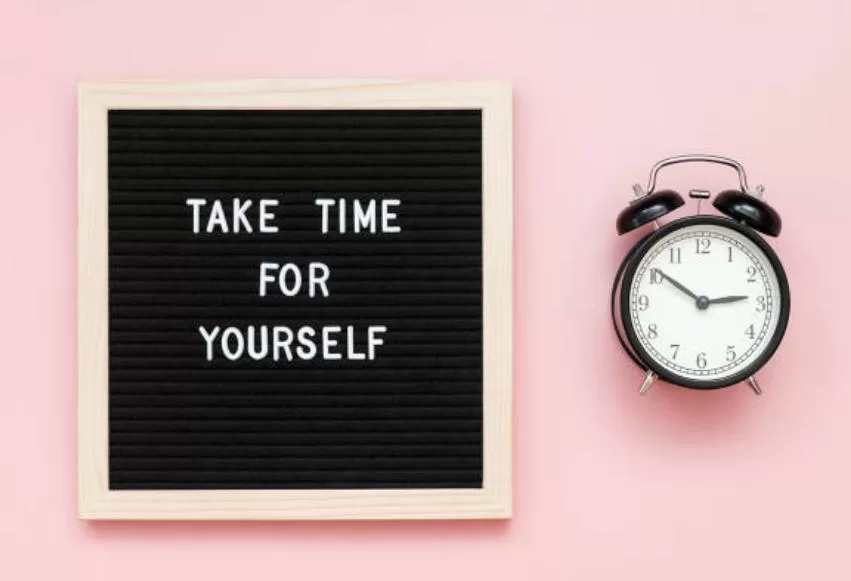Can Visualization Be Used To Improve Stress Management?
Visualization techniques can be a powerful tool to enhance academic performance by helping students to better understand and retain information.

Selfpause Affirmation App
Download the app to get 1,000’s of affirmation meditations and everything you need to write, record and listen to your own.
Stress is a common experience that can have negative impacts on both physical and mental well-being. While there are various techniques and strategies for managing stress, visualization is one that has gained attention in recent years. Visualization, also known as mental imagery or guided imagery, involves using the imagination to create pictures in the mind. It can be used to create a sense of relaxation, reduce anxiety and improve overall well-being. In this text, we will discuss how visualization can be used to improve stress management.

The concept of visualization has been studied for decades, with research showing that it can have a positive impact on stress levels. One study conducted by the American Psychological Association found that visualization was effective in reducing stress in college students. The study participants were asked to imagine a peaceful scene, such as a beach or a forest, and to focus on the sights, sounds and sensations of that scene. The results showed that the students who used visualization had lower levels of the stress hormone cortisol compared to those who did not.
Visualization can also be used to reduce anxiety and improve overall well-being. A study published in the Journal of Behavioral Medicine found that visualization was effective in reducing anxiety and improving mood in patients with cancer. The study participants were asked to imagine a peaceful scene and to focus on the sights, sounds and sensations of that scene. The results showed that the patients who used visualization had lower levels of anxiety and improved mood compared to those who did not.
Visualization can also be used to improve the physical symptoms of stress, such as headaches and muscle tension. A study published in the International Journal of Behavioral Medicine found that visualization was effective in reducing headaches and muscle tension in people with chronic tension headaches. The study participants were asked to imagine a peaceful scene and to focus on the sights, sounds and sensations of that scene. The results showed that the participants who used visualization had fewer headaches and less muscle tension compared to those who did not.
Visualization can also be used to improve sleep and promote relaxation. A study published in the Journal of Behavioral Medicine found that visualization was effective in improving sleep and promoting relaxation in people with insomnia. The study participants were asked to imagine a peaceful scene and to focus on the sights, sounds and sensations of that scene. The results showed that the participants who used visualization had improved sleep and a greater sense of relaxation compared to those who did not.

Visualization can also be used to improve self-esteem and boost self-confidence. A study published in the Journal of Behavioral Medicine found that visualization was effective in improving self-esteem and self-confidence in people with low self-esteem. The study participants were asked to imagine a peaceful scene and to focus on the sights, sounds and sensations of that scene. The results showed that the participants who used visualization had improved self-esteem and self-confidence compared to those who did not.
Visualization can also be used to improve focus and concentration. A study published in the Journal of Behavioral Medicine found that visualization was effective in improving focus and concentration in people with Attention Deficit Hyperactivity Disorder (ADHD). The study participants were asked to imagine a peaceful scene and to focus on the sights, sounds and sensations of that scene. The results showed that the participants who used visualization had improved focus and concentration compared to those who did not.
It’s important to note that visualization is not a one-size-fits-all solution and may not work for everyone. It’s also important to consult with a healthcare professional before incorporating visualization into a stress management plan, particularly if an individual has a history of mental health conditions such as depression or anxiety.
To get the most out of visualization, it’s important to find a peaceful and quiet place where you can relax and focus. It’s also important to set aside enough time to practice visualization, as it can take a few minutes to get into the right state of mind. It’s helpful to use a guided visualization recording or script to help focus the mind and create a clear image of the peaceful scene.

In addition to visualization, it’s important to implement other stress management techniques, such as exercise, yoga, and mindfulness. A combination of visualization and other stress management techniques can be even more effective in reducing stress and improving overall well-being.
In conclusion, visualization can be an effective tool for managing stress and improving overall well-being. Research has shown that visualization can reduce stress and anxiety, improve physical symptoms, promote relaxation, boost self-esteem and self-confidence, improve focus and concentration, and improve overall well-being and quality of life. However, it’s important to consult with a healthcare professional before incorporating visualization into a stress management plan, and to use it in conjunction with other stress management techniques. With regular practice, visualization can be a valuable tool for managing stress and improving overall well-being.
